Excerpts from Jim Conrad's
Naturalist Newsletter
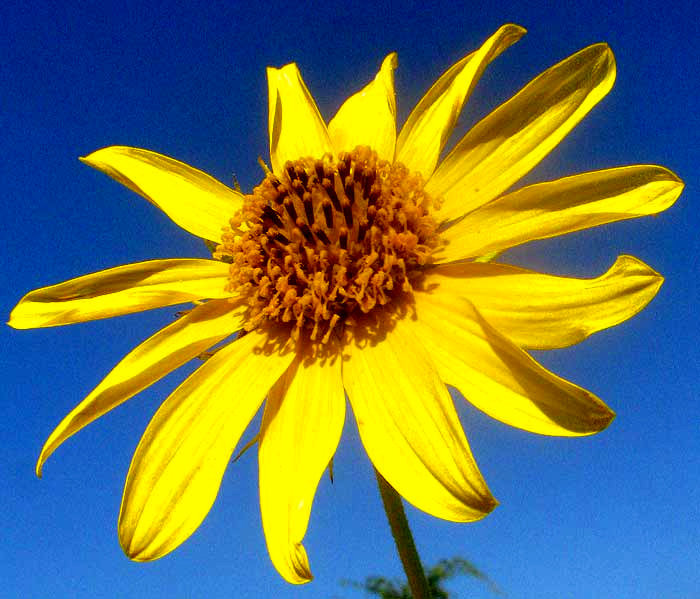
from the September 8, 2013 Newsletter issued from the Frio Canyon Nature Education Center in the valley of the Dry Frio River in northern Uvalde County, southwestern Texas, on the southern border of the Edwards Plateau; elevation ~1750m (~5750 ft); N29.62°, W99.86°; USA
MAXIMILIAN SUNFLOWER
The star of a morning's hike along the little Dry Frio River's banks was the head-high clump of yellow-blossomed members of the Composite or Sunflower Family seen below:
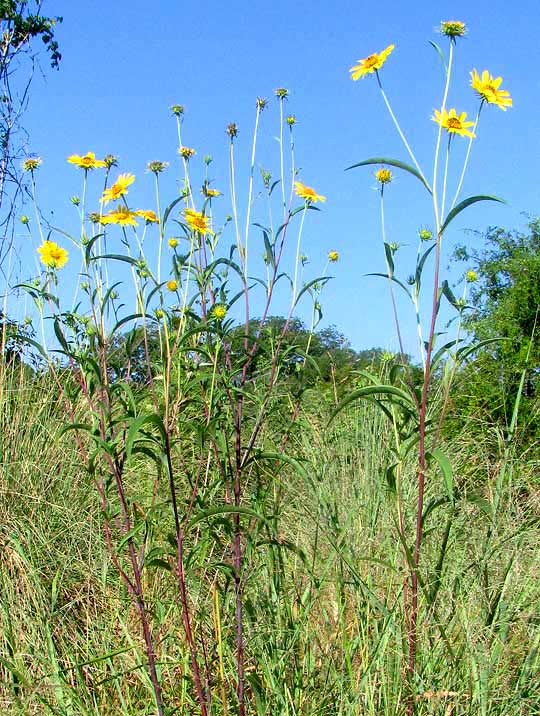
This is the only appearance of this species I've seen here; I can only imagine what whole fields of them might look like -- what we might have if the drought weren't so bad.
From the first glance this looked like one of 52 North American sunflower species -- members of the genus Helianthus with its large, yellow-rayed heads atop substantial stems with rough-feeling leaves. At the top of this page you can see a close-up of a single 3½-inch-broad head with a large "eye" of orange-yellow disc flowers surrounded by pure yellow ray-flowers.
The orange-yellow eye differs from the blackish eyes of big-headed sunflowers cultivated for their "seeds." (The word "seeds" is in quotation marks because sunflower "seeds" are actually cypsela-type fruits, each fruit with a single seed inside it.) Below, you can see the green involucre subtending one of our plant's head with its numerous, sharp-pointed, overlapping phyllaries, which also is typical of the sunflowers:
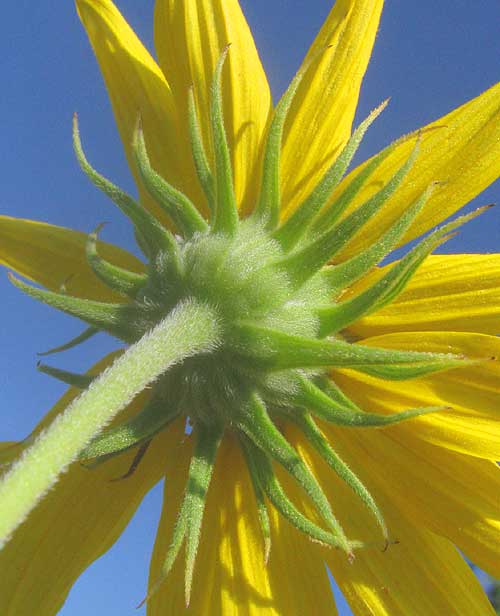
To firm up our confidence that we had a sunflower or something very closely related, a head had to be opened and looked at closely, as done below:
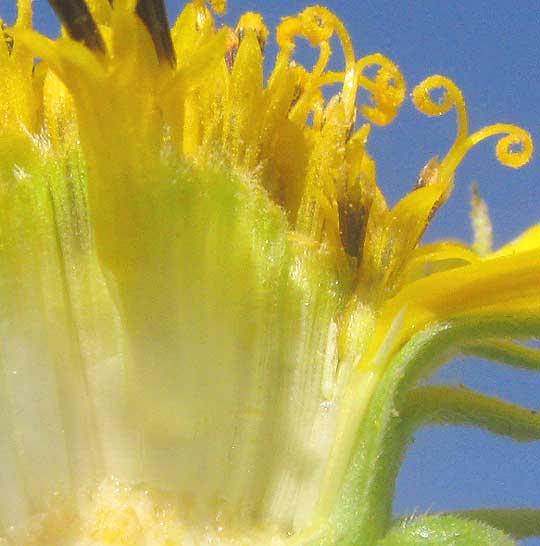
There we see scoop-shaped scales, or "paleae," partly surrounding each flower base. Atop a white, developing cypsela at the lower right you see one of two opposing scales forming the pappus, which in many Composite Family genera consists of white hairs, a crown or some other form, or is absent. Also, note that the disc flowers are producing cypselae, but beneath the ray flower no cypsela is to be seen. All these details are exactly as to be expected in a sunflower head. By the way, the Y-shaped items at the top are style arms with stigmatic surfaces on which pollen germinates.
So, which of North America's 52 sunflower species is this? While "doing the botany," these features were further noted:
The leaves were slender with one dominant midrib down the middle, and their margins bore no teeth or lobes, unlike most sunflower species which have broader, often lobed leaves and often display three major veins arising at the leaf bases. Our sunflower's leaves folded together into a V shape above the midrib, while the leaves of most sunflower species are flattish. Also, our plant's leaves were scratchy feeling, or "scabrous," with short, broad-based, stiff hairs such as those shown on a leaf's undersurface below:
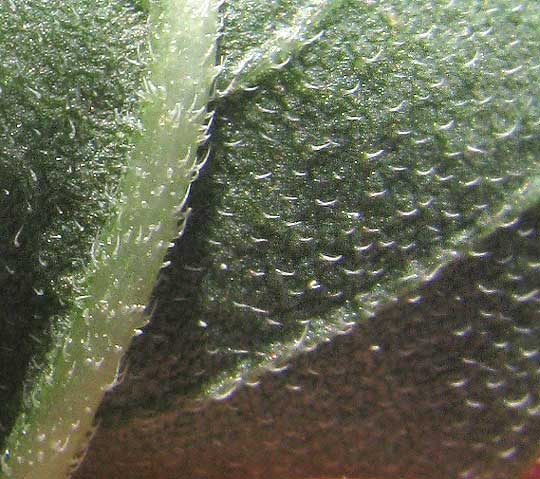
In the first photo you could see that leaves arose one per stem node -- they were "alternate." At the stem's base, however, most leaves arose two per node, or were "opposite." Opposite petioles are shown below"
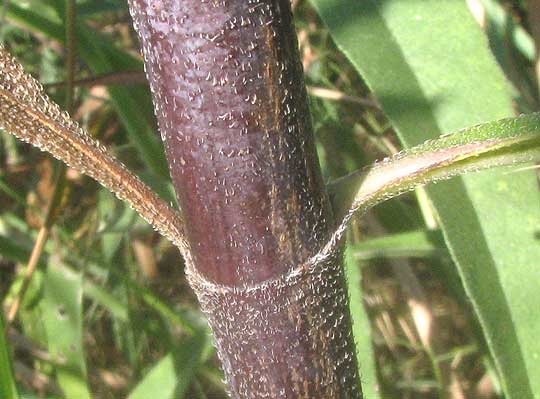
All these details point to the Maximilian Sunflower, HELIANTHUS MAXIMILIANI, named for Prince Maximilian of Wied-Neuwied (west-central Germany), who encountered our plant on his travels in North America in 1832. Maximilian Sunflowers are fairly commonly distributed across North America's prairie states and provinces, from central Canada to about here; we're at their southernmost point of distribution. The species is eaten by livestock, produces a heavy crop of seeds, and thus is valuable to many kinds of wildlife. It's an important species. Being a prairie plant, it thrives best in rich, loamy soil, which explains why here we find it only in alluvium beside the river, and not on our limestone hills.
Despite all the details mentioned above, settling on the name was hard. That's because in most cases Maximilian Sunflowers tend to arrange their flower heads in narrow, vertical arrays, the heads arising close to the stem as in hollyhocks, but you can see that our plant's heads are dispersed on long peduncles. The online Flora of North America, however, describes various head arrangements, including borne singly or in ± corymbiform or paniculiform arrays, which covers ours. Atypical individuals often turn up at the edges of a species' distribution, so maybe that's what's happening here.
In our area, if you run into a yellow-eyed sunflower with such slender leaves V-shaped above the single mid-vein, just call it the Maximilian Sunflower.